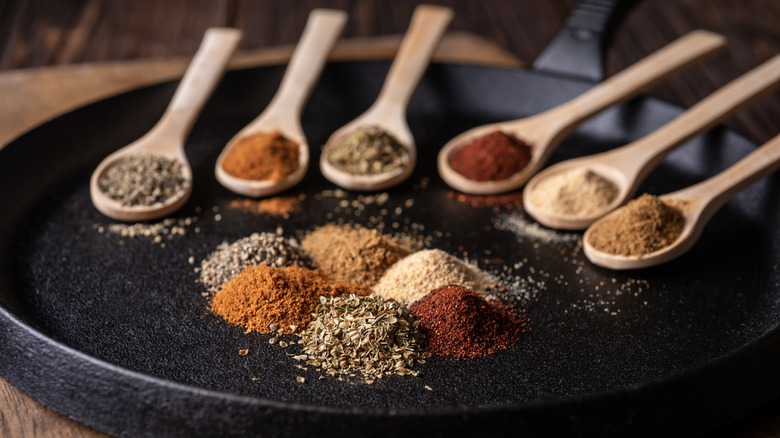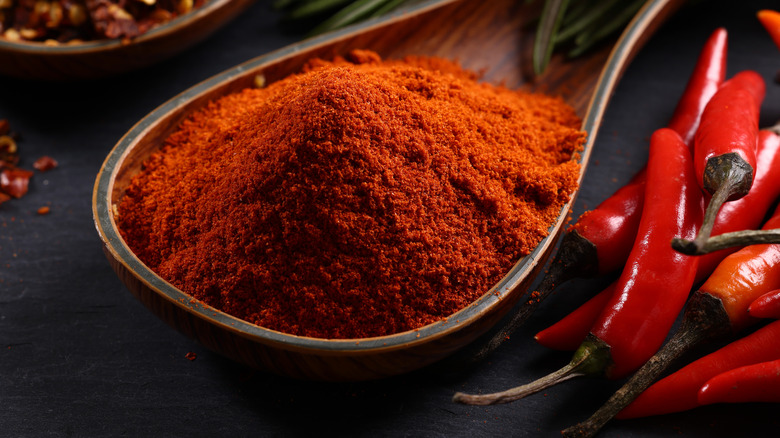How To Substitute Chili Powder For Paprika In A Pinch
It's Tuesday night, and you've gathered all the ingredients for tonight's slow cooker mac and cheese. Well, almost all the ingredients — after searching and searching, your head drops as you pick up an empty container marked "paprika" and finally remember what you went to the store for earlier (it was paprika, not the other 10 things you grabbed). You've got all the other ingredients, though, and this mac and cheese sounds absolutely delectable. Is there any way you can substitute the fiery red powder?
You can swap regular paprika (not Hungarian or smoked) out of a recipe, and chili powder is the best way to do that. Paprika is made from capsicum annuum, also known widely as peppers. The paprika you have in your spice cabinet, unless specifically marked as a specialty blend (smoked, hot, etc.), is likely a combination of various dried, very mild-heat red peppers; the exact makeup of red peppers can vary between brands.
Chili powder is made with paprika, in addition to other spices and herbs, such as cumin, oregano, and garlic powder. Chili powder may sometimes contain cayenne pepper, which creates a significantly hotter spice blend and would not be a good substitute for regular paprika. Regular chili powder is a fine substitute for paprika in a pinch due to their similarities, and while some recommend a 1:1 ratio, consider adding a little less to start and measure to taste (trust your taste buds!), as the chili powder will add other flavors you may not have been expecting.
Smoked paprika and other substitution snags
Smoked paprika is another variety of paprika, and really, the only one that presents a real problem when in need of a substitution. Sweet and hot paprika are made simply by drying out various peppers and grinding them. Smoked paprika is, as you might have guessed, made by smoking chilis over a fire (specifically oak). This method brings out smoky tones and gives the spice a rich, pungent flavor. This process can take up to two weeks, and it shows in the final product, which has an intense woodsy flavor and a brighter, deeper red color.
Smoked paprika is good for spicing up plain foods, as in this sheet pan tilapia, or for blending seamlessly with other spices, as in classic Cajun etouffee. Because of the differences in flavor, though, it would not be recommended to substitute chili powder for smoked paprika. The heat levels may be there, especially if you add both chili powder and cayenne pepper, but the bold flavor of the smoked chilis will undoubtedly be missing.
You may also want to stay away from substituting chili powder in recipes where the main ingredient is paprika or if the recipe calls for Hungarian paprika (which are often the same recipes). Hungarian paprika is a beast of its own, with a scale of heat and colors that ranges eight different categories, and special care is put into each variety. When a recipe calls for Hungarian paprika, such as this traditional chicken paprikash, it's best to use it to achieve the main flavors of the dish.

